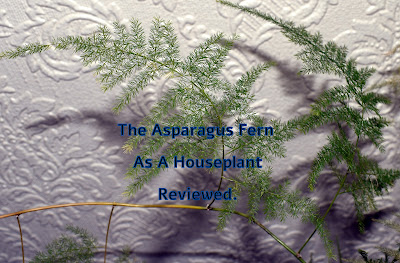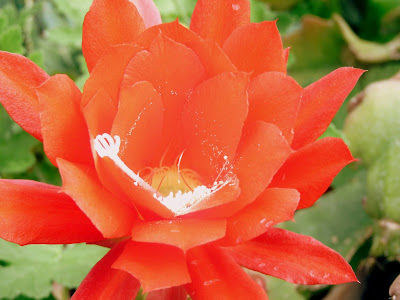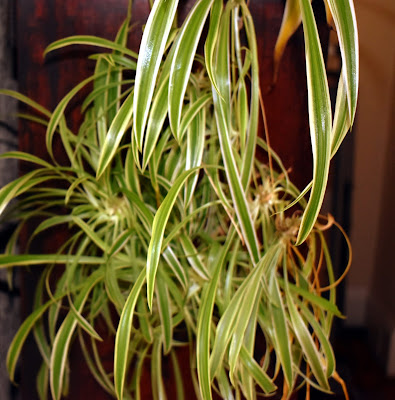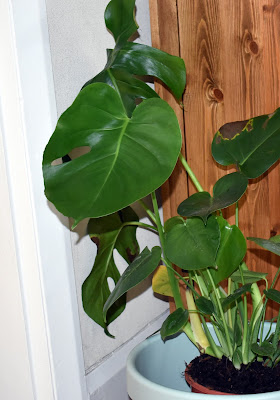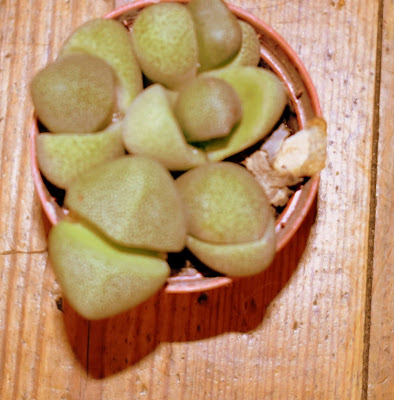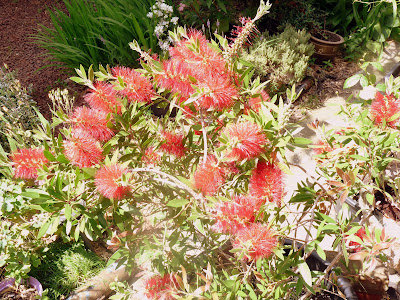We have an asparagus fern that was my Mums and it must be over 30 years old now. I love its gorgeous ferny delicate leaves which arch very gracefully. It has a versatile habit where it can be trained up supports or hung down from a high level to cascade. I also like that despite not always being pampered, it survives and thrives.
It can grow to be a large houseplant but can also be pruned easily to keep it a smaller size if required. Personally, I like to see it grow to its full potential and to be a really lovely graceful delicate looking yet strong plant.
We do however need some knowledge of its needs and care to keep it happy.
What Is The Asparagus Fern?
Ours is the large ferny arching Asparagus densiflorus ‘Sprengeri Group’with long thorny stems carrying delicate feathery leaves on long flexible stems. Often known as asparagus fern or lace fern. The other ones are the upright fox tail type fern or the sickle fern.
Well despite its name it is not an asparagus though it shares the look of asparagus. You certainly cannot eat it as it is mildly toxic to humans and animals when ingested.
Also, it is not part of the fern family despite looking like a fern. It is in fact part of the Lily family and originates in South Africa in the dense tropical forests found there.
 |
| Asparagus fern growing on supports |
How To Care For An Asparagus Fern
As with all houseplants, it is important to know the conditions where they grow in the wild. As this plant comes from a warm humid semi-shaded environment we need to try to replicate that as far as we can in our own homes.
So it is best to keep this plant somewhere out of direct sunlight as the sun will burn the leaves. It needs some light through or the leaves will turn yellow. Semi shade is best.
It must be watered regularly in the spring and summer just to keep it moist. Be careful not to waterlog it as that will rot the plant and may be the one thing this plant will not survive.
I also find it likes a misting every so often in the warmer weather to simulate the tropical forest environment. I use a specific plant mister to do this with lukewarm water. I also keep ours in a pot inside another larger pot part filled with pebbles and keep the pebbles wet to increase the humidity.
These houseplants do not like being in a draught or close to a radiator as it is too drying for them.
If the leaves go yellow at the base this is quite normal and you can just snip them off. However, if leaves that are higher up go pale or yellow it is most likely a lack of water.
These houseplants can grow large, though due to their habit do not seem to dominate a room. They can however easily be cut back with Secateurs or maybe a strong pair of scissors. I have cut ours back several times and it comes to no harm.
 |
| Delicate soft ferny leaves on Asparagus fern house plant |
I only repot when it seems to be getting potbound so perhaps once every three to four years in a good quality houseplant or general purpose compost.
Do wear a thick long sleeved top and sturdy gloves when handling this plant as the thorns are sharp and hard to avoid when repotting. I also tend to loosely tie up the plant with a soft twine when repotting to prevent stray tendrils from touching me.
The leaves may go brown if touched too much so best to avoid the chances of doing that.
If you make mistakes though in my experience it does bounce back which is a good thing in a houseplant. We are going through a heatwave with temperatures of around 40 degrees Celsius and no air conditioning and no matter what we cannot keep the house at optimal conditions for this plant and it is developing pale leaves as you can see from the photographs. However, with a little care and attention when the heatwave dissipates it will recover.
 |
| Green healthy leaves and pale dry leaves on Asparagus fern |
Asparagus Fern Pests and Diseases
It is generally a pretty healthy resilient plant as long as it has the right conditions and care.
Spider mite is the only bug that really affects this houseplant and it is usually when it is too dry. You will see like a white spider's web over the plant. It is best to use a spider mite-specific insecticide in this case.
If you have waterlogged the plant with overwatering then it may rot from the roots and this is hard to come back from. You can only try repotting in a good quality compost and hope the plant will survive.
Pale coloured leaves usually mean it is too hot or too dry or both. In the recent heatwave when the house was hot, even in usually cool rooms no matter what we did, ours has developed a few pale leaves and I am attempting to help by watering and misting.
If the leaves go brown really all we can do is snip them off. The plant will generally survive as long as not all leaves are brown but may take a while to thrive. However, it is a sign you need to step up the watering and misting.
Where To Display Asparagus Fern
This houseplant can grow very large up to about 1 meter or just over 3 feet tall and wide. It is a beautiful and showy plant but needs placing with care
I have found over the years living with this plant that it likes it best when either placed so that it can hang down from the top of a high cupboard or shelf or as we have it now so that it can climb upwards on supports. It has very long whippy stems carrying both sharp thorns and graceful delicate ferny leaves. These can easily be trained onto a support or allowed to hang down.
Left without these options it tends to flop and sprawl all over the ground which is not so pretty or practical in a house.
 |
| Long flexible stems on Asparagus Fern |
It does not like direct sun either, bearing in mind it lives in a forest in the wild we need to offer it semi-shade and as high humidity as possible.
Another point to bear in mind is that although the leaves are so soft and beautiful it also has extremely sharp thorns that from first-hand experience can really hurt! So it is best for everyone especially children and pets if we keep it so that you cannot easily touch it.
The other rather strange reason for not touching this plant is that if you handle it too much the leaves can easily go brown.
It is often suggested to place it in a bathroom which would be ideal regarding indirect sunlight and humidity but we do need to be careful of the fact it is mildly toxic and thorns in an environment where we are showering or bathing! So if it is in a bathroom make sure no one can touch it.
In my parent's house, it lived happily in our dining room on a large support on a stool behind a cabinet. There as a child I could not reach it but we could all admire it and it makes quite a statement.
We also have it in the corner of our dining room behind a furniture piece where it gets light but not direct sun, where we can enjoy it safely.
You can display this plant as a standalone or it looks great in a group of plants with contrasting leaves and colours.
It is unlikely to flower in most homes so you need to enjoy it for its leaf colour and form primarily.
 |
| Beautiful ferny leaves |
Asparagus fern makes for a very beautiful large houseplant that with some knowledge can be kept happy as a long-lived plant in most homes. We love ours and will keep it as long as possible. While probably not a beginner plant, with just a little knowledge it is easy to be successful with this gorgeous houseplant.
More House Plant Reviews
Reviewing How To Take Care Of Your House Plants On Vacation


